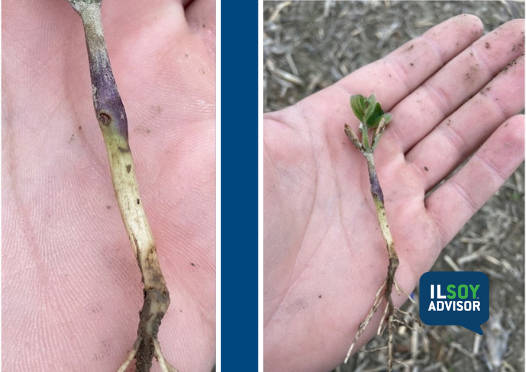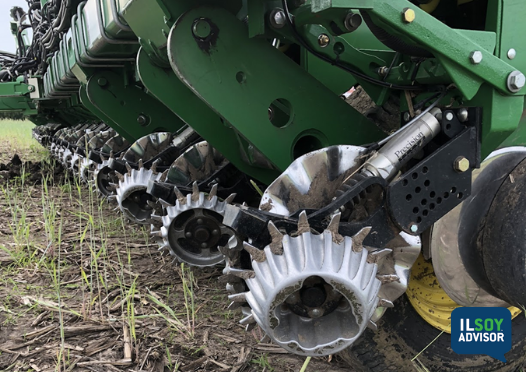ILSOYADVISOR POST
Agronomy: Soybean Selection 101
As a grower some of the most important decisions you make are the varieties you choose. Your quest for yield and profitability really begins with this decision, so it is important that you make the right choices.
Maturity: First, let’s focus on soybean maturity. There are 13 soybean maturity groups available from Group 000 (Canada) to Group X (tropics). In Illinois, we focus in on groups II – V. Choosing the right maturity group is important because soybeans are photoperiod sensitive and some varieties have a sweet spot that will be better suited to your area’s soil types or diseases. If a variety is chosen north of its adaption zone, maturity could be delayed, seedfill would go on in the cool, short days of fall, and frost could occur before maturity. If you choose a variety south of its adaptability, maturity can happen sooner than normal, and seedfill could occur in a hot, dry July.
Pod formation and seed filling are critical for high yields in soybeans. The goal would be to choose varieties that reach their physical maturity just prior to the fall date when there is a 20% chance of a killing frost. If you are not sure, yield performance will tell you which varieties are too early or too late. The earliest and latest maturity in each group may differ as much as two weeks! In some years, choosing a 5- to 7-day range between maturities could help spread risk. I have seen short season varieties escape late season disease and fuller season varieties maximize use of the growing season for yield.
Disease Rating: Next, DISEASE resistance or tolerance should be on your mind when choosing a soybean variety! Why? Because soybean diseases and soybean cyst nematodes are YIELD robbers! Resistance or tolerance has been bred into soybeans for Phytophthora root rot, sudden death syndrome, brown stem rot, white mold, soybean cyst nematode, root knot nematode and some leaf diseases. Use of resistant or tolerant varieties is the best method of disease control. Each soybean variety should have disease ratings reported in the seed guide. This information can aid in variety selection. And, yes, I am a believer in seed treatments to help reduce your risk of infection from soilborne diseases and, more recently, soybean cyst nematode and sudden death syndrome.
Emergence Score: Lastly, good emergence and vigor in soybean varieties are key, but seed quality and seed treatment also help. The standability of soybeans can be genetic, but other factors such as environment and seeding rate can come into play. Choose varieties that have good standability scores if you continue to have lodging issues. Overall plant type or fuller season variety with a bushy growth habit may be beneficial for wider row spacing. As herbicide weed resistance increases, soybeans with various herbicide traits will be a dominating factor when selecting soybeans in the future.
Stephanie Porter is a Burrus Seed Sales Agronomist. Read more about Stephanie here.





Comments
Add new comment